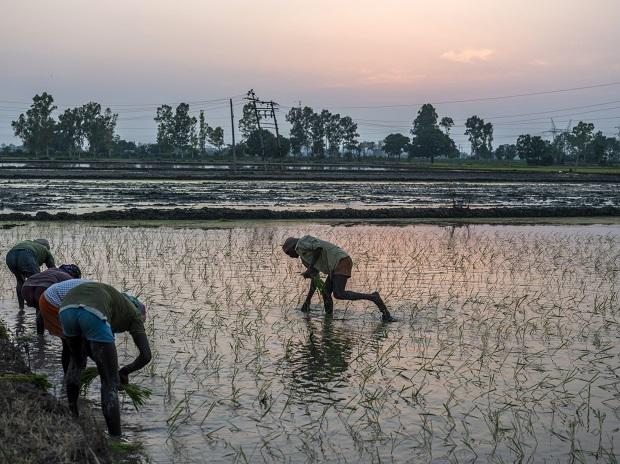.
Following Russia’s invasion of Ukraine and amid challenges for global food supply, PM Narendra Modi declared that India was capable of “feeding the world”. However, instead of feeding the world, the govt soon restricted wheat exports, citing a threat to food security.
.
Now, there are concerns about the outlook of rice production going forward.
.
.
.
According to the IMD, rainfall is deficient in major rice-producing states
This is reflected in the shrinking paddy acreage in these states. It is down by almost 340,000 hectares in Bihar, 1.14 million hectares in Jharkhand, 630,000 hectares in West Bengal, and 270,000 hectares in Uttar Pradesh.
.
In the previous season, India produced over 111 million tonnes of rice. According to a report by the US department of agriculture, India’s rice production is estimated to decline by 0.9% to 128.5 million tonnes for the full 2022-23 crop year.
.
This could be the first drop in rice output since 2015-16. For the 2021-22 crop year, India’s rice production was at a record 130.2 million.
.
So, what are the implications of lower rice production in India?
The decline in rice output could also hit exports and affect global supply dynamics. India is the largest exporter of rice and accounts for 40% of the global rice trade, supplying rice to over 100 countries. Lower rice production in India could have implications for food inflation in rice-importing countries.
.
Major customers are India’s neighbours, including Bangladesh, China, Nepal and some other middle eastern nations. India exported 21.2 million tonnes of rice in 2021-22, of which 3.94 million tonnes was the basmati variety.
.
[Byte of Harsh Wardhan, Fellow, ICRIER]
.
Combined in this order: [0:18 min to 0:33 min and 1:15 min to 1:21 min and 2:39 min to 2:49 min and 2:54 min to 3:04 min] Download link: https://we.tl/t-9k1YSGvX6x
.
.
[Byte of Mahendra Dev, Director and VC, IGIDR]
.
Besides the impact on exports, lower rice production also has implications for India’s domestic market. However, unlike wheat, the Central pool of rice stock is at 47 million tonnes as against a buffer norm of just over 13 million tonnes. This also includes the rice yet to be received from millers by the Food Corporation of India. Given the current scenario of wheat and paddy, it will also be interesting to see whether the government will extend the free food grain scheme beyond September 30.
.
As the peak paddy sowing season is over, the outlook still looks bleak. If prices continue to soar, export restrictions cannot be ruled out. But experts say the curbs, if imposed, should not be drastic like outright bans and could be in the form of higher tariffs and minimum export prices.
.
 Dear Reader,
Dear Reader,
Business Standard has always strived hard to provide up-to-date information and commentary on developments that are of interest to you and have wider political and economic implications for the country and the world. Your encouragement and constant feedback on how to improve our offering have only made our resolve and commitment to these ideals stronger. Even during these difficult times arising out of Covid-19, we continue to remain committed to keeping you informed and updated with credible news, authoritative views and incisive commentary on topical issues of relevance.
We, however, have a request.
As we battle the economic impact of the pandemic, we need your support even more, so that we can continue to offer you more quality content. Our subscription model has seen an encouraging response from many of you, who have subscribed to our online content. More subscription to our online content can only help us achieve the goals of offering you even better and more relevant content. We believe in free, fair and credible journalism. Your support through more subscriptions can help us practise the journalism to which we are committed.
Support quality journalism and subscribe to Business Standard.
Digital Editor



 Dear Reader,
Dear Reader,

GIPHY App Key not set. Please check settings